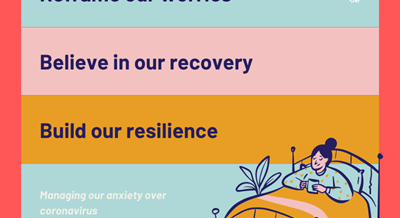
Parties, meetings, weddings; social gatherings provide plenty of opportunities to meet new people. For some, this can be exciting and fun, but, for many of us, it can be a really uncomfortable experience.
Let's start by asking what is social anxiety.
All anxiety is rooted in our response to a perceived threat. We consider something to be dangerous, and our brain and body prepare us to either take on the danger or flee from it - this is called the fight or flight response.
With social anxiety, the perceived threat might be entering a room of strangers, getting up to speak in front of people, or having to make conversation one-on-one with someone. This can cause a racing heartbeat, blushing, sweating, breathlessness or even nausea.
Everyone feels shy or anxious from time to time; however, a more extreme and persistent social anxiety can have a very debilitating impact on a person’s life, preventing them from pursuing hobbies, job opportunities or relationships.
Unsurprisingly, many people with social anxiety try to manage it by simply avoiding the situations they find difficult. This is certainly effective, but avoidance creates more problems than it solves.
Imagine being so anxious at the thought of delivering a presentation at work that you cancel it. With the threat removed, your anxiety decreases, but, because the perception that the presentation would be a disaster goes unchallenged, you have no new information to work with. Equally, after the initial reduction in anxiety, feelings of inadequacy, guilt or disappointment may surface and prove just as overwhelming as the anxiety did. All of this means that by the time the next presentation rolls around, you are likely to feel exponentially more anxious about it than you did about the first one.
So, what can you do to manage social anxiety?
Get to know your anxiety and test it
In order to overcome our anxieties, we need to try and understand them a bit better.
While comfortable and in a safe space, imagine yourself in a range of different social settings and make a list of the ones that make you feel anxious. For example, you might be someone who is fine one-on-one, but finds groups at a party or a work event really challenging.
Once you’ve got your list, choose one or two examples and spend a bit of time breaking them down into individual elements and rating your associated anxiety level out of 10.
For example, you might rate the elements of going to a networking event like below:
- Thinking about it on the day | three
- Getting ready at home | five
- Sitting in the taxi on the way | six
- Arriving at the venue and walking in | seven
- Seeing people notice my arrival | seven
- Deciding to speak to someone | eight
- Actually speaking to someone | nine.
At your next networking event for work, test these predictions.
Are you really at an eight out of 10 when thinking about speaking to someone? Perhaps, in reality, a five is more accurate. By recording these ratings of perceived versus real responses, you can get a much clearer picture of how you actually cope in social situations, rather than how you fear you might.
Challenge unhelpful thoughts
Thoughts we have before, during and after a social situation can intensify our anxiety. These thoughts can be things like “I’ll have nothing interesting to say” or “everyone thought I was an idiot”, and so on. It’s important to remember that these are just thoughts, not facts. They are born out of a heightened, anxious state, often without any real basis.
Try to challenge these thoughts when you catch them. For instance, is there any evidence that contradicts the thought or proves it wrong? This could be that you you have plenty of interesting conversations with your family and friends, so you do have interesting things to say.
Become comfortable with being uncomfortable
There is no magic switch that can turn social anxiety on and off. To deal with perceived threats, we have to face them, experience them and survive them. This exposure to our fears helps us to see them as they are in reality, and not how they’ve built up in our minds.
One approach to this is to choose a scenario in which your social anxiety is quite intense. Break it down into steps, and, in a safe, calm space, start to visualise yourself going through the experience. At each step along the way, acknowledge your discomfort and sit with it until it passes, before moving on to the next part. Start small and build slowly.
In time, move on from visualisation and actually do something that has made you quite socially anxious in the past. The process is the same in that, if you feel uncomfortable, try to stay with it, reassure yourself that all will be well and ride out the wave of anxiety.
These exposure experiences arm you with evidence to counter some of the unhelpful thoughts that may intrude during other social situations.
If you think you or someone you know might be living with social anxiety, please know that help is available.
Learn more about anxiety
Continue to…
Living with Psychosis




